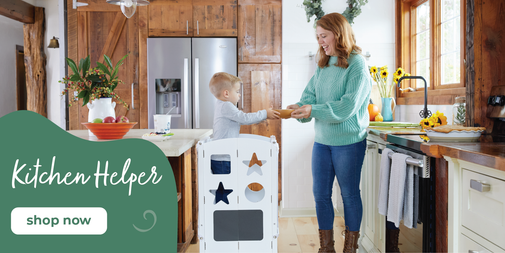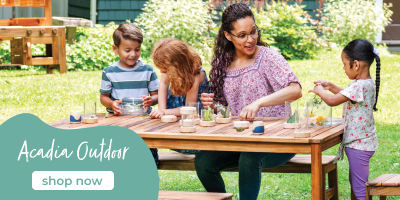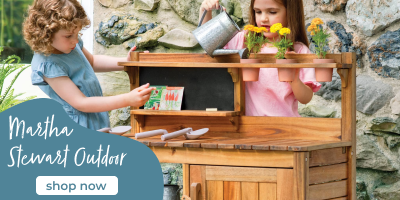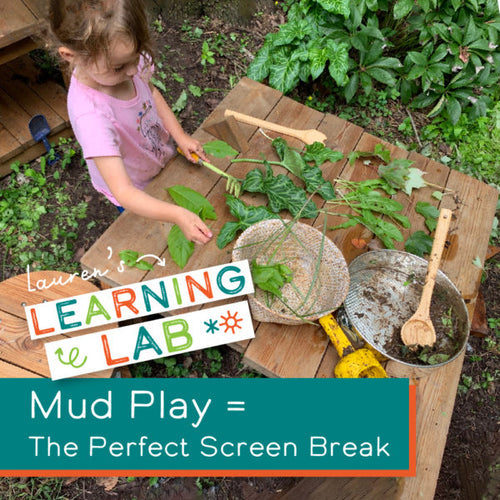7 Ways to Create Invitations to Play through a Child’s Environment

“Want to play?” These are magical words to children. An invitation to play is welcoming, inclusive, and suggests that fun is about to happen. Children learn through play, creating and re-creating what they know and what they imagine. This is their language for understanding the world. Through play, children learn problem-solving skills and test out ideas in a safe way. They grow from these successes and occasional failures. Play nurtures children’s creativity, imagination, and their independence.

While an invitation to play most likely conjures a mental image of a new friend inviting a child to join in the fun at a park or on the playground we want to let you in on a little secret: The spaces we set up for children have the potential to send similar, albeit non-spoken, messages to children, including an invitation to play.
So, what exactly is an invitation to play when it comes in the form of furniture, materials and the overall environmental design of space?
- Create a space that encourages autonomy and child-led play. When children are in a space that is designed intentionally for them, where they have the autonomy to choose what they’d like to work with, children are being invited to play.
- Make materials easily accessible. If that space is designed in such a way that shelves are low enough for children to reach without standing on tip-toes, without climbing up, and without needing help from an adult, children are being invited to play.
- Encourage exploration using open bins. Children learn through exploration and experimentation so when materials for children are displayed in open bins with the contents visible and easily accessible to them, children are invited to play.
- Provide open-ended materials that foster a child’s imagination. Open-ended materials that don’t have a prescriptive use such as wood blocks, stones, magnetic shapes or gems give children’s imaginations a lot of latitude to create what they wish. This is an invitation to play.
- Display books. Books are an equally important component in a child’s space. When books are displayed so that the cover art is visible, and a child can easily see and select the one they want to read or look at independently, this is an invitation.
- Include comfortable spaces near the materials. Children play while they are sitting, lying down, standing, kneeling and all sorts of other positions. If there is a place to comfortably do this near the materials they are working with, children are invited to play.
-
Arrange shelving in interesting ways. Shelves are opportunities to create an intriguing display. By combining materials in unexpected or nontraditional ways, and setting the stage for imagination, we are inviting children to play.


Children are constantly being invited by their surroundings to look, listen, and touch. Accepting these invitations is how children learn about the world. But our adult days and lives aren’t always set up for children to take the time they need, in the spaces they need, to truly – and safely – explore and experiment. By intentionally setting up a space that specifically supports child-led play in this way, with their needs in mind, we invite children to play.
For more helpful advice to follow while designing a homeschool preschool, click HERE.


















